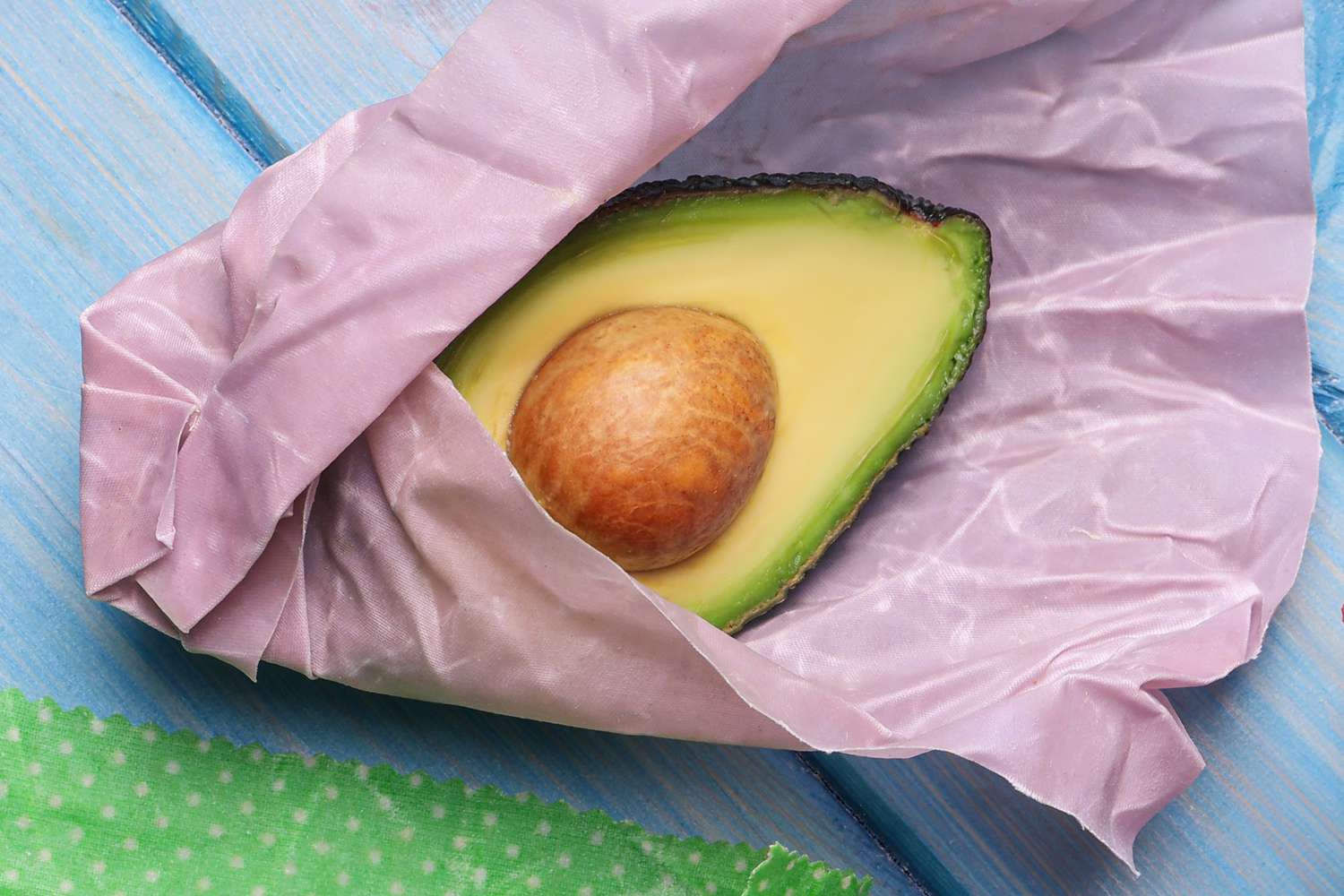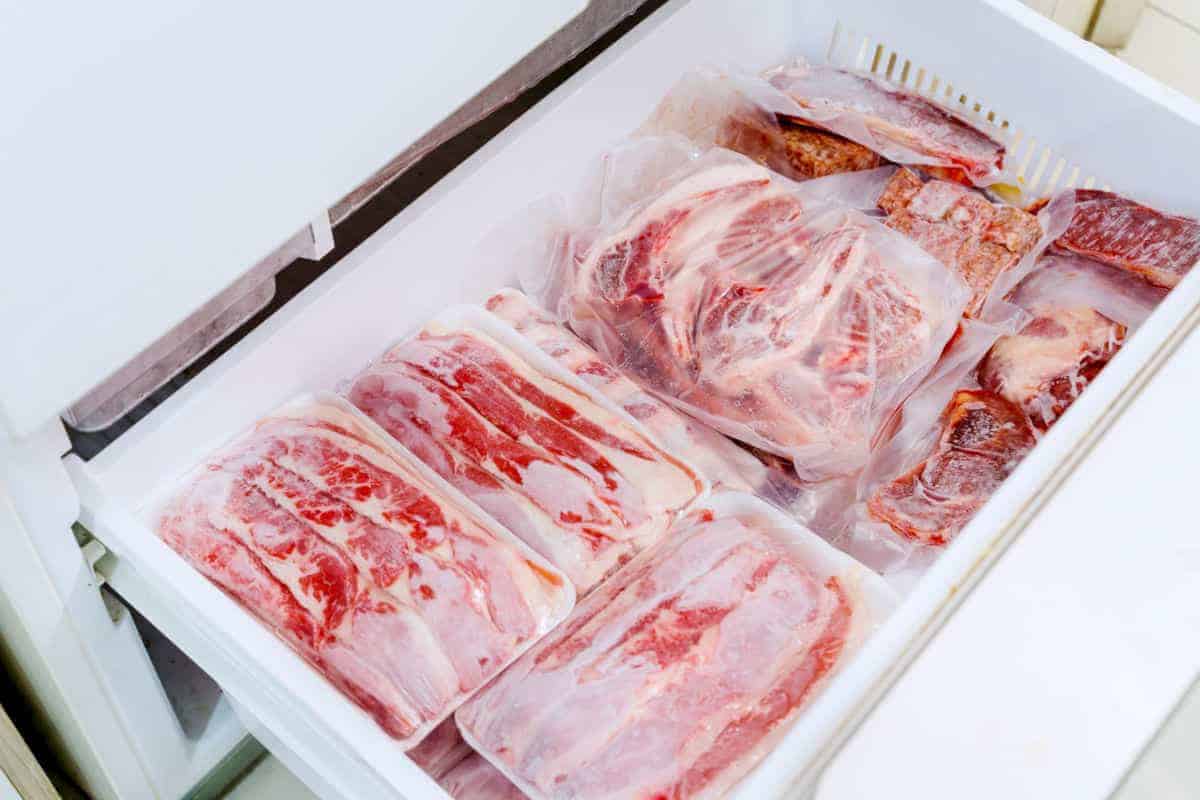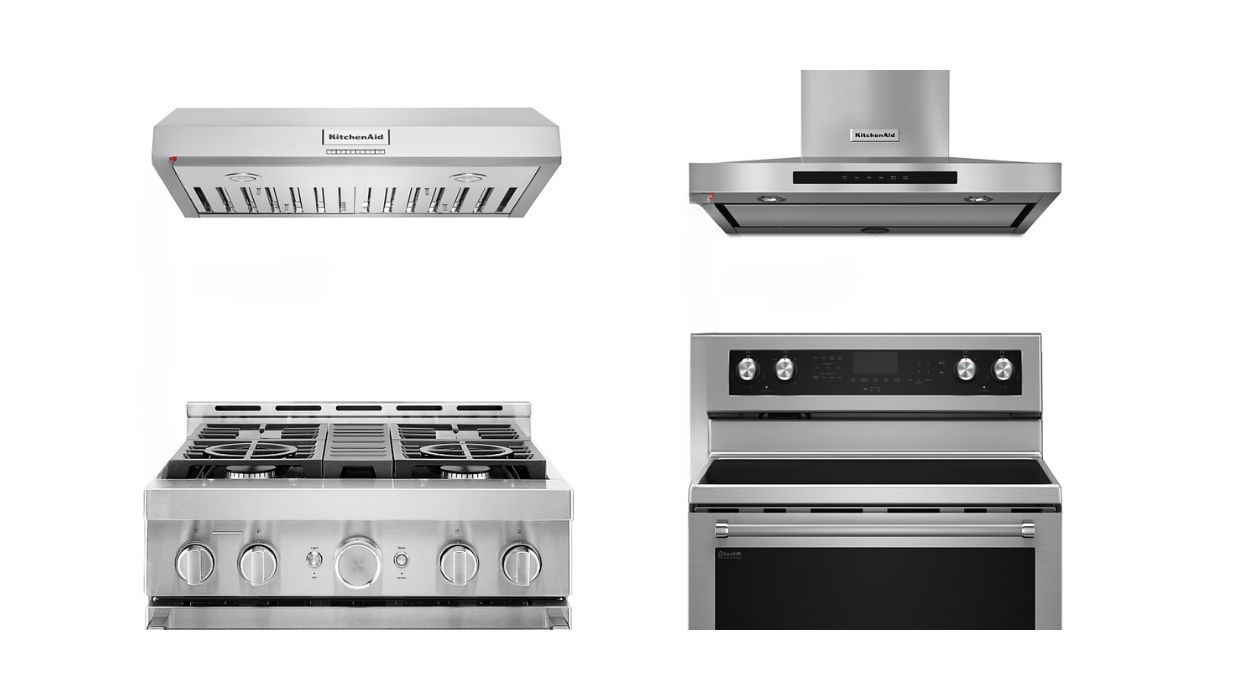Home>Articles>Which Food Should Be Stored Above The Others In A Refrigerator


Articles
Which Food Should Be Stored Above The Others In A Refrigerator
Modified: January 6, 2024
Discover the proper storage hierarchy for food in your refrigerator. Our informative articles provide guidance on which items should be placed above others to maximize freshness and prevent contamination.
(Many of the links in this article redirect to a specific reviewed product. Your purchase of these products through affiliate links helps to generate commission for Storables.com, at no extra cost. Learn more)
Introduction
Welcome to the world of refrigeration, where the preservation of food has become effortless and convenient. Refrigerators play a vital role in keeping our food fresh and safe to consume. However, proper storage and organization are key factors in maintaining food quality and preventing cross-contamination.
In this article, we will explore the importance of refrigerator storage and discuss which types of food should be stored above others. By understanding these guidelines, you will be able to optimize your refrigerator’s efficiency and ensure the safety of your food.
Whether you are a seasoned chef or a cooking novice, it is essential to implement proper storage practices to avoid food spoilage and potential health risks. Let’s dive into the world of refrigerator organization and food safety guidelines to ensure that your kitchen remains a haven for fresh and delicious ingredients.
Key Takeaways:
- Proper refrigerator organization is crucial for food safety. Store ready-to-eat foods, dairy products, and cooked vegetables on top shelves, and raw meat, poultry, and seafood on lower shelves.
- Follow food safety guidelines to maintain freshness and reduce waste. Keep the refrigerator temperature between 34°F and 40°F, regularly clean, label and date leftovers, and store specific foods above others to prevent cross-contamination.
Understanding Refrigerator Storage
The layout of a refrigerator may seem simple at first glance, but understanding how it operates can greatly impact the quality and longevity of your food. Most refrigerators are divided into different compartments or zones, each designed for specific purposes.
The top shelf of the refrigerator is generally the warmest area, making it ideal for storing ready-to-eat foods and leftovers. This area is suitable for items like deli meats, cooked poultry, and dairy products such as yogurt and cheese.
The middle shelves provide a moderately cool environment and are ideal for storing perishable items such as eggs, milk, and condiments. These shelves should be organized in a way that allows easy access to frequently used items.
The lower shelves and drawers are the coldest part of the refrigerator. This area is perfect for storing raw meat, poultry, and seafood, which need to be kept at a consistently low temperature to prevent bacterial growth. It is important to store these items properly to avoid any potential cross-contamination.
Don’t forget about the door shelves, which are slightly warmer due to their proximity to room temperature. These shelves are suitable for storing items such as condiments, beverages, and other non-perishable items.
Understanding these temperature variations throughout the refrigerator is crucial for proper food storage. Now let’s move on to the food safety guidelines to ensure that your refrigerator remains a safe and healthy environment for your food.
Food Safety Guidelines
When it comes to storing food in the refrigerator, following proper food safety guidelines is of utmost importance. By doing so, you can reduce the risk of foodborne illnesses and ensure the longevity and freshness of your ingredients. Here are some essential food safety guidelines:
- Keep the refrigerator temperature between 34°F and 40°F (1°C and 4°C) to prevent bacterial growth. Use a refrigerator thermometer to ensure the temperature remains within this range.
- Store raw meat, poultry, and seafood on the bottom shelf or in designated drawers to prevent their juices from dripping onto other foods. This reduces the risk of cross-contamination.
- Wrap or cover all food items before storing them in the refrigerator. This helps to maintain their quality and prevents the spread of odors.
- Label and date leftovers to keep track of their freshness. Consume them within 3-4 days to ensure they are safe to eat.
- Avoid overcrowding the refrigerator. Good airflow is necessary to maintain proper temperature and prevent food spoilage. Make sure there is enough space between items to allow for adequate circulation.
- Keep raw vegetables separate from raw meat, poultry, and seafood. Raw vegetables should be stored in the crisper drawer, away from these items, to avoid potential cross-contamination.
- Do not store perishable foods on the refrigerator door shelves as they are exposed to temperature fluctuations. Instead, reserve these shelves for non-perishable items like condiments and beverages.
- Regularly clean your refrigerator, including shelves, drawers, and door seals, to prevent the buildup of bacteria. Use a mild detergent and warm water to sanitize the interior surfaces.
- Do not leave perishable foods, such as cooked dishes or leftovers, at room temperature for more than two hours. Promptly refrigerate them to prevent the growth of harmful bacteria.
- When in doubt, throw it out. If you are unsure about the freshness or safety of a particular food item, remember that it’s better to be safe than sorry. Discard anything that looks or smells suspicious.
By following these food safety guidelines, you can maintain the quality, freshness, and safety of the food stored in your refrigerator. Now, let’s focus on organizing your refrigerator to maximize efficiency and accessibility.
Maximizing Efficiency in Refrigerator Organization
An organized refrigerator not only creates a visually pleasing sight but also helps maximize efficiency and accessibility. When everything has its designated place, it becomes easier to locate ingredients and minimize food waste. Here are some tips to help you organize your refrigerator:
- Categorize your items: Group similar items together to create a logical organization system. For example, designate specific shelves or drawers for dairy products, fruits, vegetables, condiments, and beverages.
- Use clear containers: Consider using transparent containers or storage bins to keep similar items together and easily visible. This can help prevent items from getting lost in the depths of the refrigerator.
- Utilize storage accessories: Make use of refrigerator accessories such as egg holders, can dispensers, and wine racks to maximize the available space and keep items well-organized.
- Keep frequently used items at eye level: Store items that you use most often, such as milk, eggs, and commonly used condiments, at eye level for easy access. This eliminates the need to shuffle through other items to find what you need.
- Arrange items based on expiration dates: Place items with closer expiration dates towards the front of the refrigerator. This ensures that you use them before they spoil and reduces food waste.
- Label and date leftovers: To avoid confusion and prevent leftovers from being forgotten, label them with the date they were prepared. This makes it easy to identify and consume them within a safe timeframe.
- Regularly purge expired items: Set a reminder to clean out your refrigerator on a weekly basis and discard any expired or spoiled items. This helps maintain a clutter-free environment and promotes food safety.
- Keep the refrigerator door organized: The door shelves are prone to temperature fluctuations, so it’s best to store non-perishable items like condiments, jams, and juices there. Avoid placing delicate items like eggs or dairy products on the door shelves.
- Use labels for better organization: Consider using labels or sticky notes to mark the contents, date of opening, or expiration of certain items. This helps you easily identify and track the freshness of your stored food.
- Regularly clean spills and messes: Spills and leaks can lead to bacterial growth and unpleasant odors. Clean up any spills promptly and regularly disinfect your refrigerator to maintain a hygienic environment.
By following these tips, you can transform your refrigerator into an efficiently organized space. This makes it easier to locate and access the items you need, saving you time and reducing food waste. Now, let’s delve into the specific types of food that should be stored above others in the refrigerator.
Store raw meat, poultry, and seafood on the bottom shelf of the refrigerator to prevent any drips or leaks from contaminating other foods. Keep ready-to-eat foods, like fruits and vegetables, on the upper shelves to avoid cross-contamination.
Foods That Should Be Stored Above Others
Properly organizing the items in your refrigerator not only enhances efficiency but also ensures that certain foods are stored above others to prevent cross-contamination and maintain food safety. Here are some foods that should be stored above others:
- Ready-to-eat foods: Any fully cooked or ready-to-eat foods, such as leftovers, deli meats, and cooked poultry, should be stored on the top shelf of the refrigerator. This prevents any potential drips or leaks from contaminating other items below.
- Dairy products: Milk, cheese, yogurt, and other dairy products should be stored on the top or middle shelves. This helps maintain a consistent temperature for these perishable items and reduces the risk of cross-contamination.
- Cooked vegetables: Cooked vegetables should be stored above raw vegetables to prevent any potential contact between raw juices and cooked food. Place them in separate containers or use different shelves to avoid contamination.
- Fruit: Fresh fruits, such as berries, apples, and citrus, should be stored on the upper shelves or in dedicated fruit drawers. Keeping them above other items helps prevent them from being crushed and aids in air circulation.
- Raw seafood: If you have raw seafood, such as fish or shellfish, store it on the bottom shelf or in a designated drawer. This prevents any juices from dripping onto other foods, reducing the risk of cross-contamination.
- Eggs: Eggs should be stored on a middle shelf or in the designated egg compartment, away from raw meat and poultry. Keeping them away from raw proteins minimizes the risk of bacterial transfer from these items.
- Herbs and delicate greens: Tender herbs, like parsley and cilantro, and delicate greens, such as lettuce and spinach, should be stored in the crisper drawer. Keeping them separate from other items prevents them from being crushed and helps maintain their freshness.
- Leftovers: Properly label and store leftovers on the top shelf or designated area in the refrigerator. Storing them above other items ensures they are easily visible and consumed before their expiration date.
It’s important to note that some refrigerators come with adjustable shelving or customizable compartments. Take advantage of these features to create an optimal storage arrangement for your specific needs.
By following these guidelines and storing certain foods above others, you can significantly reduce the risk of cross-contamination and maintain the quality and safety of your food. However, there are a few additional precautions to keep in mind when storing certain types of food. Let’s discuss them next.
Precautions for Storing Certain Foods
While organizing your refrigerator and storing foods according to the guidelines mentioned earlier is crucial, there are additional precautions to consider when handling and storing certain types of food. These extra measures can help ensure the safety and quality of your stored food. Here are some precautions for storing specific foods:
- Raw meat and poultry: Store raw meat and poultry in sealed containers or leak-proof bags on the bottom shelf or in a separate drawer to prevent any potential cross-contamination with other foods. It’s best to keep them stored towards the back of the refrigerator where temperatures are colder.
- Raw seafood: When storing raw seafood, such as fish or shellfish, make sure to place them in a sealed container or wrap them tightly in plastic to prevent any potential leakage. Additionally, keep them in the coldest part of the refrigerator, which is usually the bottom shelf or designated drawer.
- Raw eggs: Eggs should be stored in their original carton on a middle shelf or in the designated egg compartment. This helps protect them from temperature fluctuations and prevents them from absorbing strong odors from other foods.
- Leftovers: When storing leftovers, allow them to cool down before placing them in the refrigerator. Divide large portions into smaller containers to facilitate faster cooling and ensure that they are stored properly labeled with the date of preparation. Consume leftovers within 3-4 days to maintain their quality.
- Fruits and vegetables: Wash fruits and vegetables before storing them in the refrigerator to remove any dirt or pesticide residues. However, it’s important to note that some fruits, such as berries, are best washed just before consuming to avoid accelerated spoilage. Store them in separate containers or designated drawers to prevent cross-contamination.
- Condiments and sauces: Store condiments and sauces, such as ketchup, mustard, and salad dressings, on the door shelves or the middle shelves of the refrigerator. Make sure to check the expiration dates regularly and discard any expired or spoiled products.
- Herbs and spices: While some herbs, like cilantro and parsley, can be stored in the refrigerator, others, such as basil or rosemary, may lose their flavor and texture. Consider storing herbs with their stems in a glass of water, wrapped with a damp paper towel to maintain their freshness.
- Canned foods: Canned foods are generally safe to store at room temperature, but if you prefer to keep them in the refrigerator, make sure to label and organize them properly. Avoid storing opened cans directly in the refrigerator, as the metal can absorb odors.
- Beverages: Store beverages like water, milk, and juice on the top or middle shelves, where temperatures are most consistent. Be cautious with carbonated beverages, as they can explode when exposed to extreme temperatures. If the refrigerator becomes too full, consider dedicating a separate space for storing beverages.
By taking these precautions into consideration when storing specific foods, you can maintain their freshness, quality, and safety. It’s important to regularly check the condition of the stored items and discard any that show signs of spoilage or have exceeded their expiration date.
With a well-organized refrigerator and proper storage practices, you can enjoy the benefits of longer-lasting, safer, and more delicious food. Let’s conclude our discussion and recap the key points we’ve covered.
Conclusion
Organizing your refrigerator and understanding the proper storage techniques for different types of food is essential for maintaining freshness, preventing cross-contamination, and ensuring food safety. By following the guidelines and precautions outlined in this article, you can make the most of your refrigerator’s capacity and optimize its efficiency.
Remember to store ready-to-eat foods, dairy products, and cooked vegetables on the top shelves, while reserving the lower shelves for raw meat, poultry, and seafood. Utilize clear containers, storage accessories, and labels to keep your refrigerator organized and easily accessible.
Additionally, maintaining a refrigerator temperature between 34°F and 40°F (1°C and 4°C) is crucial for preventing bacterial growth and preserving the quality of your food. Regularly clean your refrigerator, discard expired items, and label and date leftovers to stay on top of freshness and prevent food waste.
By following these practices, you can reduce the risk of foodborne illnesses and ensure that your stored food remains safe and delicious. Remember to prioritize proper food handling, avoid storing certain foods above others, and be mindful of specific precautions for different types of food.
With a well-organized and optimized refrigerator, your cooking experience will be more enjoyable, and you can confidently prepare delicious meals with fresh and safe ingredients.
So, take a moment to assess your refrigerator’s organization and implement these guidelines. Your efforts will not only enhance food safety but also contribute to a more efficient and satisfying culinary experience.
Now go ahead and open your refrigerator, apply the knowledge you’ve gained, and create a well-organized and food-safe environment for your ingredients. Enjoy the benefits of a fresh and enjoyable cooking journey!
Frequently Asked Questions about Which Food Should Be Stored Above The Others In A Refrigerator
Was this page helpful?
At Storables.com, we guarantee accurate and reliable information. Our content, validated by Expert Board Contributors, is crafted following stringent Editorial Policies. We're committed to providing you with well-researched, expert-backed insights for all your informational needs.















0 thoughts on “Which Food Should Be Stored Above The Others In A Refrigerator”